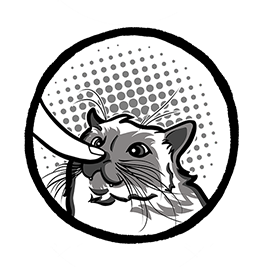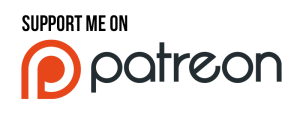Patreon Pick: Tumblr & Instagram
This Patreon Pick was a tie, so I’ve decided to squish the two topics together! Luckily they’re two topics that go well together, and not some blasphemous combination like creamed corn on pepperoni pizza (ate that once that as a child…. the horror). So for this post we’ll be covering some of the basics of using Tumblr, and how it stacks up to Facebook-owned Instagram!
Tumblr
There’s no easy way to say this: Tumblr makes me feel old. And not the super-hip Betty White kind of old.
Tumblr has a language all of its own, and to truly use it well you need to be really tuned into its audience. In this case, that audience skews heavily towards teens and Millennials. Adapting an overly serious brand into content for the platform is typically a wasted effort. That said, despite some initial challenges, Tumblr is a wonderfully rich platform. When used effectively, Tumblr also provides some of the most positive brand sentiment.
At its core, Tumblr is a social blogging platform. Rather than creating your own website, Tumblr allows you to quickly create an account and get rolling with blogging and reblogging a variety of content. These ease at which content is shared on Tumblr is its biggest strength, and has resulted in a huge surge in accounts since its inception. As an added bonus, content shared on Tumblr has a really long shelf life, gaining reblogs long past the original post date. (Source)
Pros
- Animated GIF support
- Extremely customizable
- Variety of formats (text, pic, quote, link, chat, audio, video)
- Scheduled posting
- Content longevity
Cons
- Comments section of doooooom
- Responding to comments can be a bit tricky
- Hard to get noticed if you don’t have a big existing following or hit the reblog jackpot
- Advertising on the platform is out of reach for most brands
Getting Started
Learning the Language
To succeed on Tumblr, make sure you really understand your audience before you start posting. I suggest using a personal Tumblr account and actively engaging for a while before you kick off your brand Tumblr strategy. While this is true of any social network, I’ve found the Tumblr ramp up to be a bit more intense. The desktop interface isn’t super intuitive, and while there have been quite a few improvements to the overall CX, I still find myself feeling lost at times.
Branding via Theme
Once you have your account set up, you can choose to customize it with a custom theme or skin. If you’re intending to use Tumblr as your official blog, or otherwise have a strong brand presence, it’s worth it to have a custom theme designed to fit your needs. If you’re a smaller brand or individual, you can find a variety of free themes around the web, or spend a modest amount to get one through a site like Themeforest.
Content Creation
A few brands that are using Tumblr well:
If you’ve noticed, there are a couple of core themes across those examples:
- Humor
- Visual-heavy
- Animated GIFs
- Quick & easy content
Exhibit A:

Source: Denny’s Tumblr – http://blog.dennys.com/post/143550778133/just-shoot-an-onion-ring-over-to-your-friend
Tumblr really isn’t the appropriate place to post your SO SRS content and press releases. While it’s okay to have the occasional longer post in the mix, the content that works best is that which is highly visual, funny, and sharable. If you’ve planning to use Tumblr, make sure you have enough visual content to really make an impact. Budget the time and resources to create some great GIFs, and don’t be afraid to show a sense of humor. When all else fails, bask in the glorious (and ridiculously effective) weirdness that is the Denny’s Tumblr account.
Given the power of Tumblr, why would you ever consider using Instagram? Well for one, managing an Instagram account is easy. There’s no custom theming for Instagram accounts, so there’s no need to invest money and effort into a custom design. Once you have the app installed and have created an account, it’s just a matter of remembering to take and upload images on a regular basis.
Pros
- Easy to get started & maintain
- Return on Investment (ROI) is high
- Relevant hashtags can quickly boost visibility
- Facebook integration allows for targeted advertising
- Broader demographic, with 40%+ of users over the age of 30 (Source)
Cons
- Limited content options (pics, 60 seconds of pre-recorded video)
- Reading & responding to comments in-app is painful (use Iconosquare on desktop instead)
- Follower growth can be slow, unless you’re a huge brand
- No native scheduling
- No animated GIFs
A few brands that are using Instagram well:
One common misstep I see from brands on Instagram is focusing too heavily on sharing official branded imagery. The people following you on Instagram are often your superfans, so focusing too heavily on official assets they’ve seen elsewhere is rarely going to yield great results. Instead, focus on the human side of your business. Show the behind-the-scenes look at what you’re creating, and the real world people who are involving in making the magic happen.
Even in the case of Urban Decay, the heavily branded images still read as a bit more casual and behind the scenes. They’ve invested heavily in professional photography for their feed, but have paid attention to the conventions of the platform and used that to their advantage.
In the case of game developer Double Fine, they focus heavily on behind-the-scenes pics from the studio. This helps humanize the studio, and invites the community into the experience of game development in a way that they might not otherwise have access to. They do have the occasional game-focused image, but they’re few and far between.
Something from @starstew came in the mail today!
A photo posted by Double Fine Productions (@doublefine) on
Which one?
So which one would I choose? To that I have to say…
The overhead on Instagram feed is pretty minimal, and gives you another opportunity to reach a larger audience. If you’re able to budget for both, I’d absolutely advise you do so. You’ll reach more people and give those fans that strongly prefer one platform to engage with you where they’re comfortable.
However, if you absolutely most choose just one, then I’d look at which platform is going to work the best with your audience. Play around with both from a personal standpoint and see if your brand has content that will resonate on that platform. If you’re going to have to really reach to make it work for one or the other, it may be best to divert your efforts elsewhere.
Resources
- Tumblr Business
- 5 Reasons Tumblr is a Good Bet (Simply Measured)
- Beginner’s Guide to Instagram (Mashable) – a bit dated, but still a good overview
- Photo Sharing Platforms for Businesses (Hootsuite)
- 16 of the Best Brands on Instagram (Hubspot)
Support Me
Dig my writing and want to see more? Support my writing on Patreon!
Already supporting me? Well then, you are THE BEST. Yes, you!






